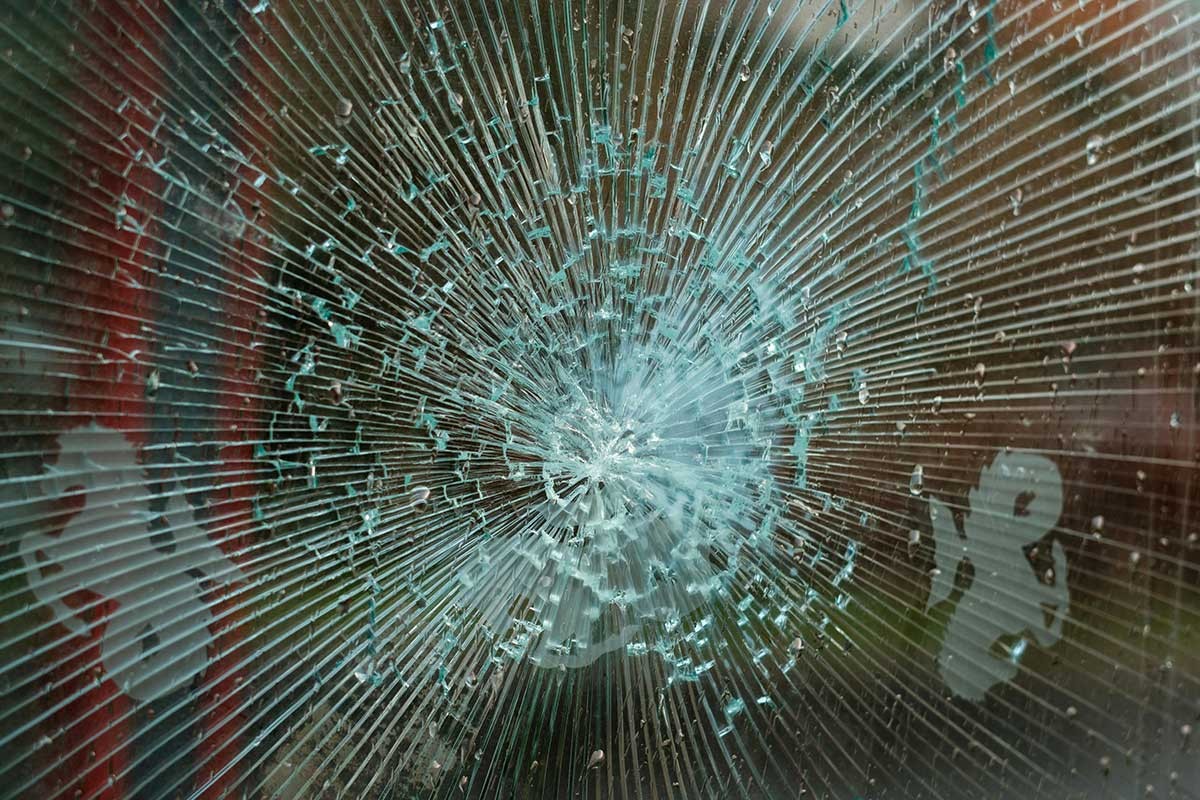Calcium Carbonate Etching on Glass Nickel Sulphide Inclusion
16th October 2025
Encountered rarely, but several times over the past 30 years. Nickel Sulphide inclusion breakage occurs without warning and in our experience has had to be dealt with swiftly and safely causing minimum disruption to the public.
We dealt with a incident for a client as recent as last year where a large 4th floor window ‘Spontaneously Popped’ directly over a public access area.
We responded to the call directly, our client thought they had been the victim of an airgun or catapult attack which had caused the panel to shatter. Upon arrival on site and closer inspection of the shattered panel it became very apparent Nickel Sulphite Inclusion Breakage had occurred.
The unit effected was large and double glazed, typically the internal panel internal panel had failed. Considering the risk for the panel to fail further and fall to the floor with the potential cause serious harm or injury to the public.
The glazed unit was directly above a public throughfare as previously mentioned the Terrazzo flooring type causes an additional issue as a landing zone for glass fragments – They tend to bounce and can end up everywhere; glass shards will also cause extensive scratching and damage to hard flooring surfaces.
After advising and discussing with the client a plan was formed. The throughfare was to be closed to the public and cordoned off for the duration of the works. All surfaced had to be protected from the pending crash of falling glass shards. Visqueen sheets were laid out and taped down to the flooring and walls – it is vitally important to contain the glass.
Fortunately, there were access hatches in the ceiling at level 6 directly above the drop zone, there is plenty of architectural supporting steelwork for the Rope Access Technicians to anchor from and enable a controlled decent to the work area.
PPE for this operation is of course of paramount importance. Rope Access Technicians had to wear all in one protective suit with the legs and cuffs having to be taped to prevent shards dropping into loose clothing causing potential cuts and lacerations to the Rope Access Technicians. Full face visors and gloves were also essential.
Our Industrial Rope Access Technicians knocked out the shattered panel, cleaned the window seals and fitted a triple ply board in its place for temporary added protection from further falls and any inclement weather. All shards were contained and removed successfully, and the building was re-opened after 6 hours.
What is Nickel Sulphide Inclusion?
Nickel Sulphide Inclusions (NSI) is a rare impurity that can occur in toughened glass, potentially leading to spontaneous breakage. These tiny metal particles are invisible to the naked eye but can pose a significant risk to damage glazing in certain conditions:
High temperature stable state – formed during the glass manufacture process.
Low Temperature stable state – The final, natural state of the inclusion at ambient temperatures.
During the glass toughening process, NSI is trapped in the high temperature state. As the glass cools rapidly, the NSI does not have to revert to its low temperature state. Over time, however, it generally transforms, causing an expansion that can result in spontaneous glass breakage if the inclusion is located within the tensile (central) zone of the glass panel.
How to identify Nickel Sulphide Inclusion breakage.
One of the most common indicators of NSI induced glass breakage is the Butterfly effect pattern. This distinctive breakage pattern features a singular fracture point with cracks fanning out symmetrically, resembling butterfly wings. However, confirming an NSI – related failure requires professional glass analysis.
Warranties and insurance coverage for Nickel Sulphide breakages :- despite the advancements in glass manufacture, NSI remains an unpredictable phenomenon.
Glass manufacturers and suppliers do not offer warranties against NSI breakages.
